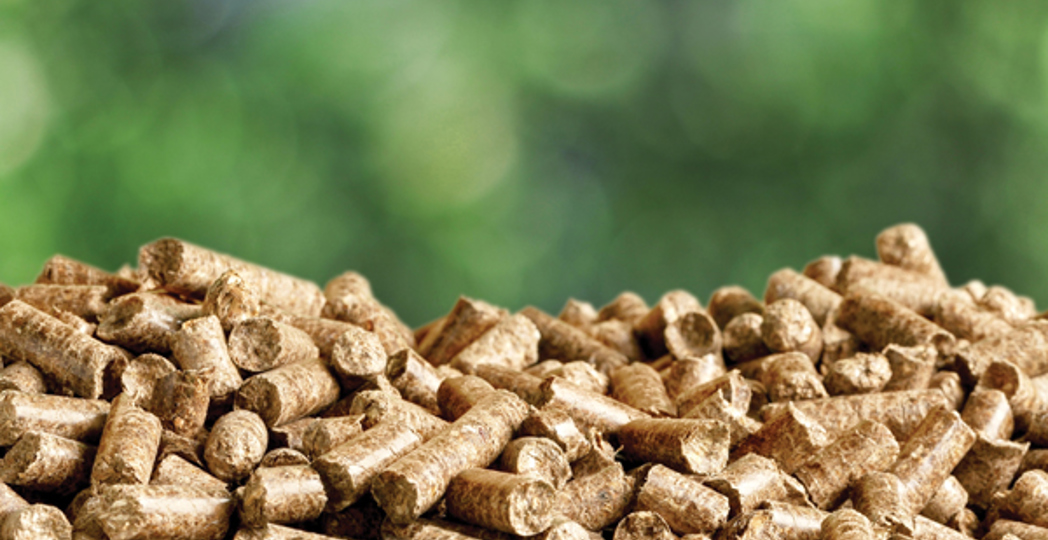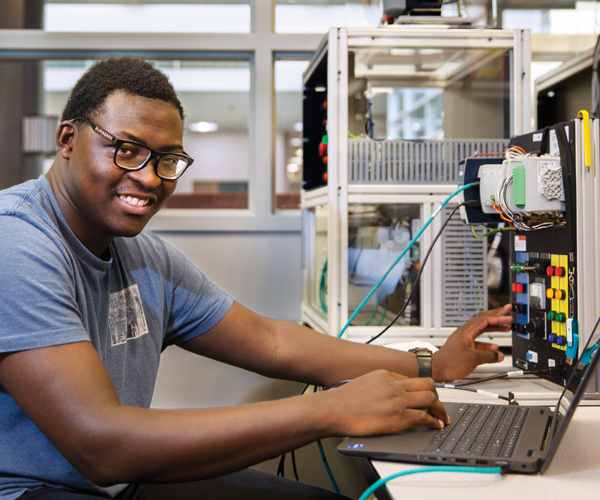Find Out How Akron’s Tech Hub Will Use Biomimicry to Create Sustainable Feed Stocks
Sustainable Polymers Tech Hub's first initiative will focus on innovation to address climate and environmental impacts resulting from the use of fossil fuel-derived polymers.
by Terry Troy — Partnership Content | May. 1, 2024 | 4:00 AM

Courtesy iStock Photos
While biomimicry is being used for new technological innovations across many sciences and disciplines, it is playing its most important role in the development of new sustainable polymers — especially those that can biodegrade. That’s the consensus of sources within the polymer industry and with the scientists who are working in biomimicry.
The initiative came into better focus with the designation of the Polymer Industry Cluster of the Greater Akron Chamber as a national Tech Hub — a designation that was tasked with creating sustainable and biodegradable polymers.
When the Polymer Industry Cluster of the Greater Akron Chamber received its designation as both a national Tech Hub and a recipient of a Strategic Development Grant last October, it really came as no surprise to industry insiders. After all, the Greater Akron area has been a world leader in the polymer industry and the development of new technology for well over 100 years.
What is transformative is how much impact those two awards will have on our state’s economy, especially in those 18 counties surrounding the Greater Akron area.
“The overall purpose of the Tech Hub program is in line with the general initiative of the polymer cluster that we started well before the Tech Hub program ever existed,” says Brian Anderson, vice president of the Polymer Industry Cluster and now regional innovation officer of the new Tech Hub. “We wanted to create a robust ecosystem around a technology that we are really good at and create a continuous engine of innovative growth, fueled by strong R&D activity, developing new technology, building an entrepreneurial ecosystem and commercializing new technologies.”
The Greater Akron Chamber actually started its work on the Polymer Industry Cluster over three years ago.
“Over the last several years, the Polymer Industry Cluster, powered by the Greater Akron Chamber, has been working
closely with our polymer companies, industry stakeholders, research institutions and economic development partners to double down on our region’s legacy in polymers to create a new future for advanced polymer materials that are both functional and sustainable,” says Steve Millard, president and CEO of the Greater Akron Chamber. “Greater Akron’s Designation as a Tech Hub and awardee of the Strategic Development Grant will accelerate our efforts to advance our work, invest in our region’s future and build on Ohio’s rich history in the polymer sector. We are excited to be a part of the opportunity of solving tomorrow’s problems from a foundation of scientific and manufacturing leadership that goes back 125 years.”
And the chamber’s key partners agree.
“This is a community with a rich history of partnership and collaboration for economic development, workforce creation and innovation,” says Dr. Gary Miller, president of the University of Akron, one of the leading academic partners in the cluster. “Our designation as a Tech Hub and the awarding of a development grant both affirm this great history and ensure our continuation as a national leader in polymer and advanced materials research, education, training and technology innovation. The University of Akron, which is ranked No. 1 in the world for polymer science and plastics engineering, is excited to continue this work with our partners.”
Out of nearly 400 total applicants nationwide, 31 received a Tech Hub Designation and 29 received a Strategy Development Grant from the U.S. Department of Commerce Economic Development Administration (EDA). The Greater Akron Chamber’s (GAC) application was one of only 11 to receive both, which advantageously positions GAC’s Polymer Industry Cluster for a potential Phase 2 grant award of between $40 million and $75 million. The Tech Hubs are designed to catalyze investment in technologies critical to economic growth, national security and job creation, and will help communities across the country become centers of innovation critical to American competitiveness.
With its formal title being the Sustainable Polymers Tech Hub, the first initiative will be a focus on innovation to address the severe climate and environmental impacts resulting from the use of fossil fuel-derived polymers (rubbers and plastics) through accelerating sustainable polymer manufacturing and commercialization in the United States.
“Our expertise with polymers obviously started with the rubber and tire industry,” says Anderson. “Today we have a level of expertise that is much broader and far reaching and includes diverse industries like health care and electronics. Look at any material today. If it is not metal or glass, there’s a good chance that it is a polymer.”
However, the production of polymers has resulted in challenges like greenhouse gas emissions and plastic pollution. The Tech Hub is seeking to leverage its regional assets — such as the largest concentration of plastics and rubber manufacturing plants, machines and materials in North America — as well as regional partnerships in research and development and an inclusive regional workforce, to establish global leadership in sustainable plastic and rubber technology that has reduced emissions and is recyclable, biodegradable and non-toxic.
“And there are a couple of ways to attack environmental issues,” says Anderson. “One way is to create materials that are biodegradable at the end of their useful life. Materials that won’t just float around in our oceans for hundreds of years but will biodegrade.
“The other way is to recreate our recycling capabilities so that we can tear apart these complex plastic materials into their original forms so that we can make the next product out of the same material without adding more plastic to the overall ecosystem. What we are talking about is unlocking the power of a circular economy, reducing the carbon footprint across the entire life cycle of a product or material.
“Plastics aren’t going anywhere,” adds Anderson. “They offer superior performance and are economical. We need to figure out how to make plastics and polymers more sustainable — to create polymers from sustainable feed stocks, rather than creating them from fossil fuels. Making polymers from plants or recycled materials is an obvious answer.”
That would certainly change the current negative dialogue around the whole idea of polymer and plastics use and the impact on our environment.
Naturally, academia plays a key partner in the cluster’s growing consortium of partners.
“When we started our cluster three years ago, we had 17 partners,” says Anderson. “It has grown to over 50 or so today, and we continue to grow.”
There are four major higher education partners, which include the aforementioned University of Akron, as well as Case Western Reserve University and Kent State University — two excellent sources for R&D activity, which is often complementary, notes Anderson.
“We also have Stark State College, which does a lot of field work for us,” adds Anderson. “They are always updating our new talent needs and are very helpful with workforce development and retention of talent.”
There are also about 40 private sector companies that are involved closely with the cluster, many of which are multi-billion-dollar corporations, including Goodyear, Bridgestone, Continental, Avery Dennison and Coca-Cola, to name but a few.
“Bridgestone is committed to sustainable mobility and its partnership with the Polymer Cluster Initiative,” says Dr. Hans Dorfi, senior vice president of Product Development for Bridgestone Americas and incoming board chair at the Bounce Innovation Hub. “We congratulate the team on achieving the regional technology hub designation. This is an important milestone toward developing novel sustainable polymers.”
While the numbers of partners are growing, it is still just the tip of the iceberg when it comes to the overall Ohio polymer industry.”
In Northeast Ohio alone, there are over 500 polymer companies, Anderson says.
“Out of those, many are involved with manufacturing, a sector which employs over 42,000 people” he says. “But there are also other companies that are just R&D shops, or transportation and logistics companies. We have a much broader and more robust polymer industry than just manufacturing.
“We have a lot of assets and capabilities in the region,” adds Anderson. “We are ranked No. 1 in the world in polymer science and theory. So, we know that we are really good at this, but having the Tech Hub designation lets the rest of the world know what we already knew.”
Developing new polymer technology to benefit even more industries is also key in the cluster’s future initiatives, says Anderson. Indeed, just highlighting examples of the polymer industry’s past innovations would take up an entire book.
“Think of all the applications of polymers across multiple industries and industry sectors,” says Anderson. “If you look at the automotive side alone, EVs require tires that can withstand different kinds of stresses than traditional tires. Vehicles that get better fuel economy also need lighter weight components — which polymers provide. There are also important polymer elements in new batteries.”
We are seeing that in the evolution of lithium-ion batteries to the future’s solid-state batteries.
“Through our incredibly strong R&D activity, we are developing these new technologies,” says Anderson. “We have a strong entrepreneurial ecosystem, so we are also commercializing those technologies. We are also building new businesses around those technologies.”
This, of course, leads to job creation and the attraction of new talent and companies.
“The designation as a Tech Hub, and the Strategic Development Grant, will absolutely have a positive impact on the polymer industry jobs that are already here as well as the jobs we will soon create,” says Anderson. “It will help us toward the creation of a more attractive business ecosystem to thrive in and around the polymer industry. It will make our region even more attractive, which will ultimately bring in more business, talent and capital — which creates a continuous engine of innovation and growth.”
“For over a century, Akron has been a driving force in transforming some of our nation’s most important industries,” says Ohio Governor Mike DeWine. “Being selected as a Tech Hub is a testament to the hard work of the Greater Akron Chamber. This designation is a great example of how Ohio will continue to be at the heart of innovation for years to come.”
“I want to commend the Greater Akron Chamber for putting together a winning proposal,” adds Ohio Lt. Governor Jon Husted. “This is a great opportunity for the team to leverage these federal dollars with state dollars for innovative polymer research and development happening right here in Ohio so that jobs can be created for Ohioans living in the region.”
Trending
-
1
-
2
-
3
-
4
-
5










